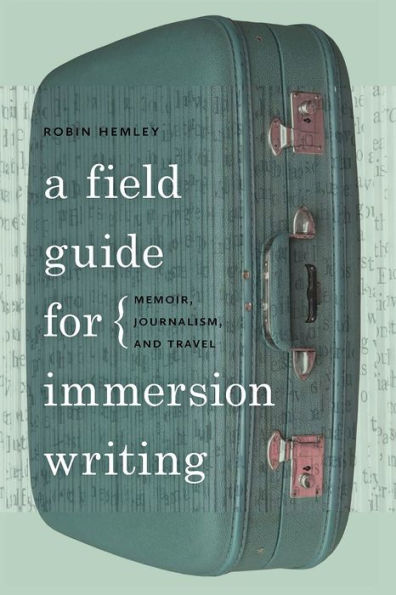For centuries writers have used participatory experience as a lens through which to better see the world at large and as a means of exploring the self. Considering various types of participatory writing as different strains of one style—immersion writing—Robin Hemley offers new perspectives and practical advice for writers of this nonfiction genre.
Immersion writing can be broken down into the broad categories of travel writing, immersion memoir, and immersion journalism. Using the work of such authors as Barbara Ehrenreich, Hunter S. Thompson, Ted Conover, A. J. Jacobs, Nellie Bly, Julio Cortazar, and James Agee, Hemley examines these three major types of immersion writing and further identifies the subcategories of the quest, the experiment, the investigation, the infiltration, and the reenactment. Included in the book are helpful exercises, models for immersion writing, and a chapter on one of the most fraught subjects for nonfiction writers—the ethics and legalities of writing about other people.
A Field Guide for Immersion Writing recalibrates and redefines the way writers approach their relationship to their subjects. Suitable for beginners and advanced writers, the book provides an enlightening, provocative, and often amusing look at the ways in which nonfiction writers engage with the world around them.
A Friends Fund Publication.
For centuries writers have used participatory experience as a lens through which to better see the world at large and as a means of exploring the self. Considering various types of participatory writing as different strains of one style—immersion writing—Robin Hemley offers new perspectives and practical advice for writers of this nonfiction genre.
Immersion writing can be broken down into the broad categories of travel writing, immersion memoir, and immersion journalism. Using the work of such authors as Barbara Ehrenreich, Hunter S. Thompson, Ted Conover, A. J. Jacobs, Nellie Bly, Julio Cortazar, and James Agee, Hemley examines these three major types of immersion writing and further identifies the subcategories of the quest, the experiment, the investigation, the infiltration, and the reenactment. Included in the book are helpful exercises, models for immersion writing, and a chapter on one of the most fraught subjects for nonfiction writers—the ethics and legalities of writing about other people.
A Field Guide for Immersion Writing recalibrates and redefines the way writers approach their relationship to their subjects. Suitable for beginners and advanced writers, the book provides an enlightening, provocative, and often amusing look at the ways in which nonfiction writers engage with the world around them.
A Friends Fund Publication.

A Field Guide for Immersion Writing: Memoir, Journalism, and Travel
192
A Field Guide for Immersion Writing: Memoir, Journalism, and Travel
192eBook
Related collections and offers

Product Details
| ISBN-13: | 9780820343730 |
|---|---|
| Publisher: | University of Georgia Press |
| Publication date: | 03/01/2012 |
| Sold by: | Barnes & Noble |
| Format: | eBook |
| Pages: | 192 |
| File size: | 3 MB |
